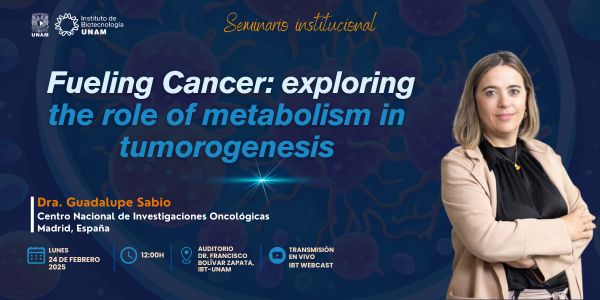
24Feb - 2025
Fueling Cancer: exploring the role of metabolism in tumorogenesis
12:00 PM - 02:00 PM|Dra. Guadalupe Sabio|Centro Nacional de Investigaciones Oncológicas, Madrid, España|Invitado por: Dra. Leonor Pérez
Seminario
El tejido adiposo es mucho más que un simple depósito de energía; es un órgano endocrino clave que regula el metabolismo y la homeostasis del organismo. Sin embargo, en la obesidad, su disfunción genera una serie de alteraciones metabólicas y hormonales que incrementan el riesgo de enfermedades cardiovasculares y cáncer.
Nuestro grupo ha visto como la alteración tejido adiposo puede influir negativamente en la función cardíaca al liberar metabokinas que afectan el metabolismo del miocardio.
También se tratará de la relación entre la obesidad y el cáncer. Epidemiológicamente, se ha observado que la obesidad incrementa significativamente el riesgo de varios tipos de cáncer, con casos como el cáncer endometrial (hasta 7 veces más frecuente en personas con obesidad severa) y el cáncer de hígado, riñón, páncreas y colorrectal (cuyo riesgo se duplica en obesos). Nuestros resultados demuestran como la alteración del adipocito puede afectar al desarrollo de cáncer.
Actualizado 2025-02-20 10:09:40



